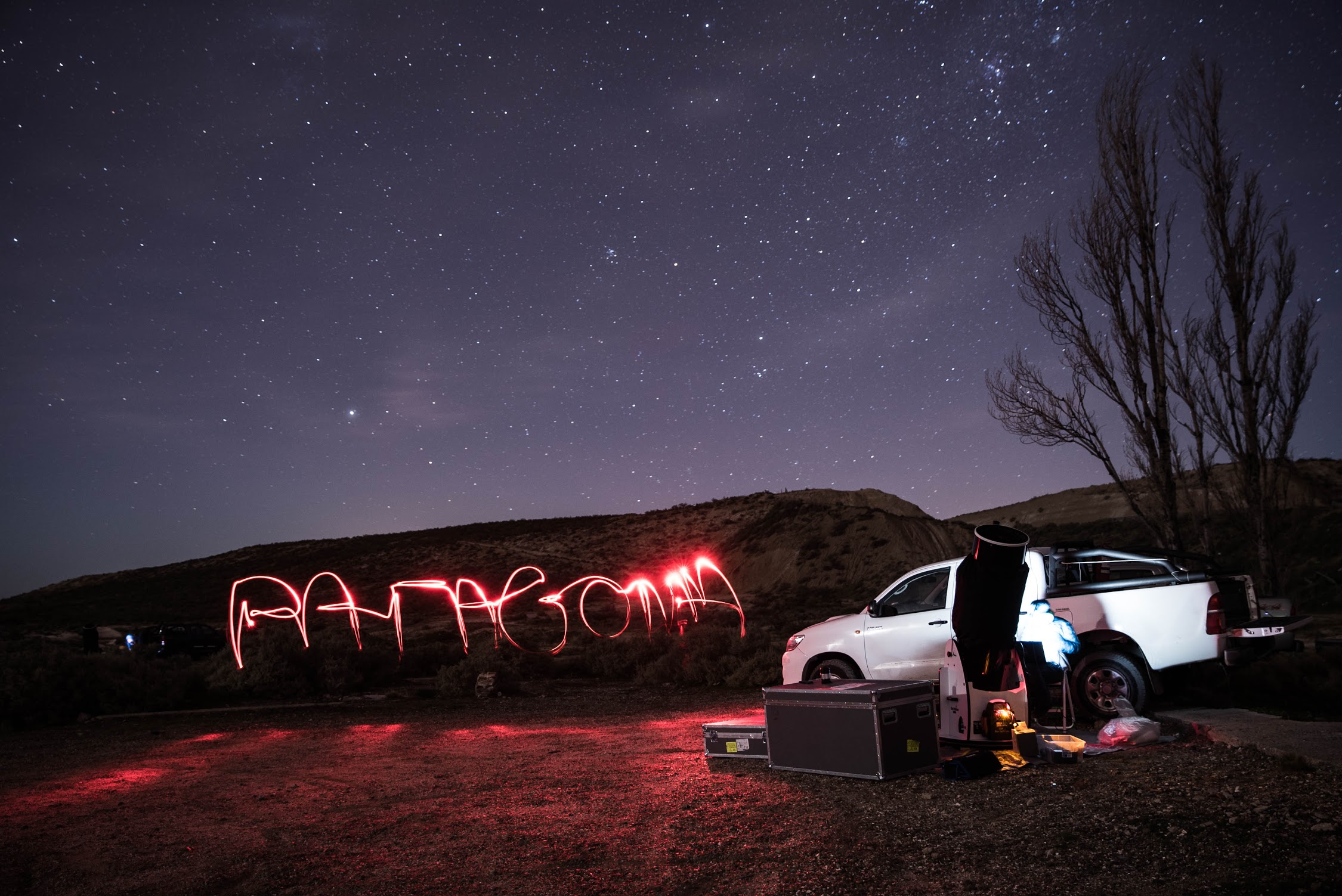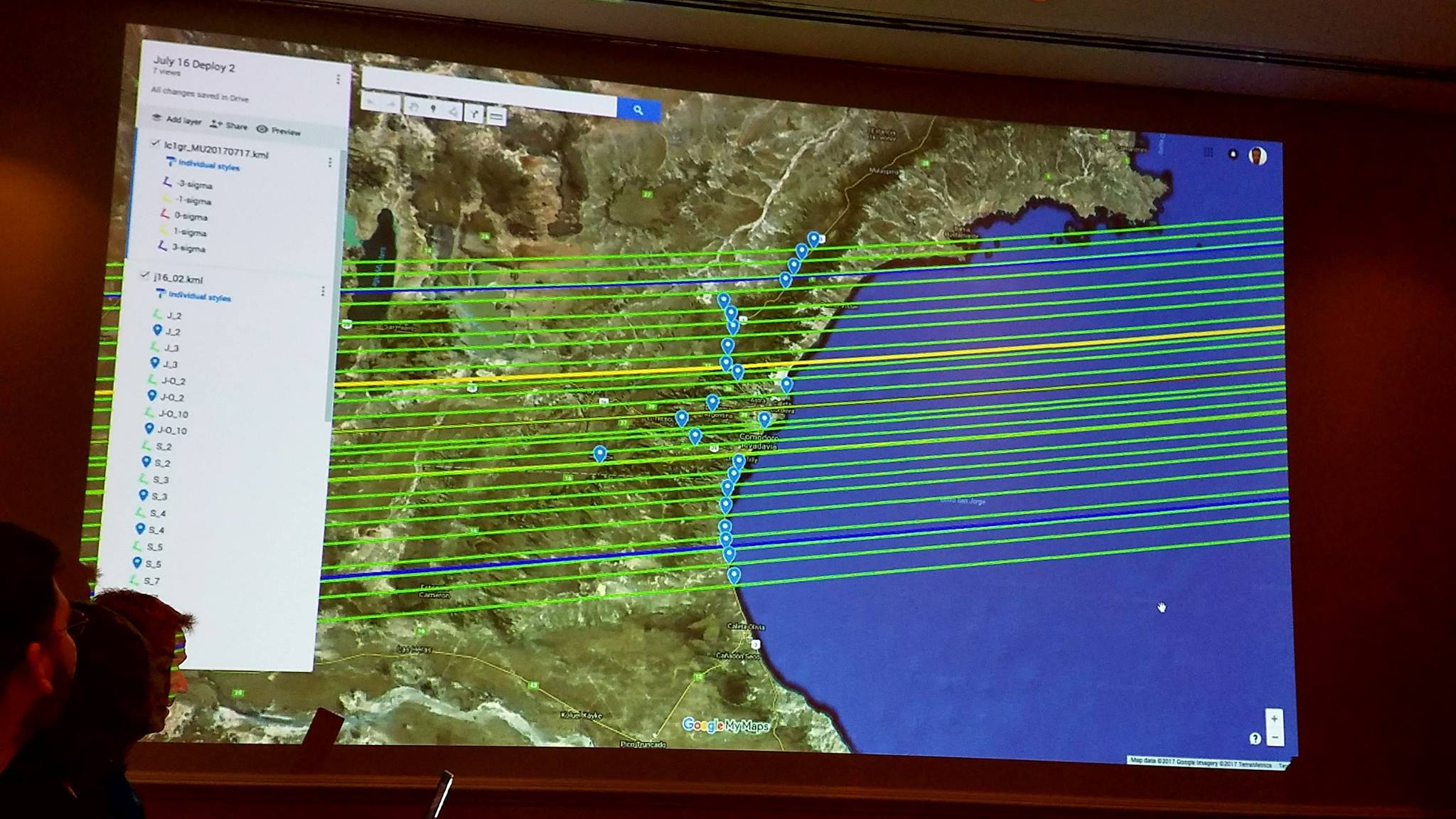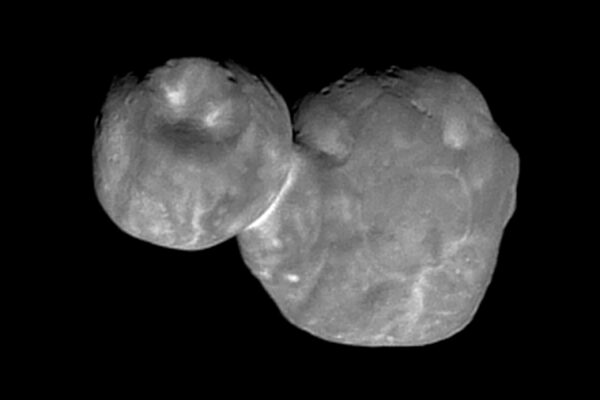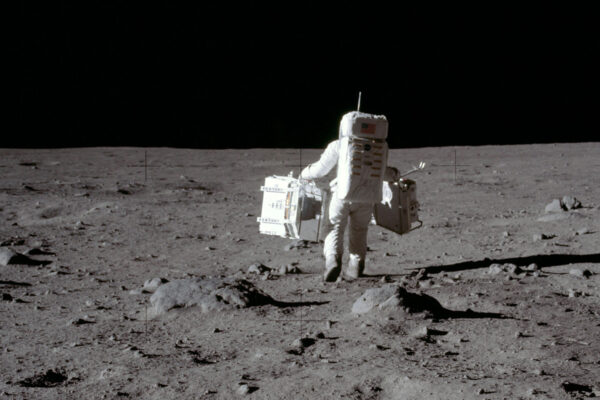
A wonderful thing happened between the first dreams of a mission to Pluto and the launch of New Horizons in 2006. In 1992, astronomers spotted the first “new” object in the Kuiper Belt, a previously hypothetical belt of plant-building debris beyond Neptune.
Although astronomers had long thought Pluto couldn’t be hanging out there on the edge of the solar system alone, it wasn’t until telescopes with light-sensitive, charge-coupled devices became available that they could actually see other bodies. After two Kuiper Belt Objects, or KBOs, were spotted within six months’ time, “everyone ran to the telescope,” said William McKinnon, a planetary scientist in Arts & Sciences at Washington University in St. Louis and a co-investigator on the NASA science team of New Horizons.
Today, there are more than 2,500 catalogued bodies in the Kuiper Belt, including several beside Pluto that qualify as dwarf planets, and there are thought to be hundreds of thousands yet to be seen. The belt, which is 20 times larger than the asteroid belt between Mars and Jupiter, holds debris from the formation of the solar system. It played a leading role in the dance of planets that led to the solar system’s current configuration, which can’t be explained without it.
McKinnon describing the allure of the Kuiper Belt for NASA 360, one of four programs in NASA’s eClips suite of web-based shows designed to encourage careers in science.
Given the burst of KBO discoveries and the revised understanding of Pluto’s place in a bigger cosmos, after the Pluto fly-by the New Horizons team asked for and received permission for a mission extension. That enabled them to fly New Horizons past a second KBO, Pluto being the first, and to observe an additional two dozen KBOs from afar.
Finding a suitable target for the second flyby (within the one-degree cone along the spacecraft’s path reachable with the fuel left for course corrections) proved difficult, but the Hubble Space Telescope ultimately found three. The probabilities that these objects were reachable within the spacecraft’s fuel budget were 100 percent, 7 percent and 97 percent. In the end, the first potential target, provisionally called 2014 MU69, was selected for the flyby, and the spacecraft irrevocably committed to this choice by firing its engines to adjust its course in MU69’s direction.
That’s when the “eclipse chasing” began.
(An eclipse is a type of occultation; both involve one cosmic body blocking the view of another along a line of sight.)
MU69 is so faint, no telescope on Earth can see it . The small telescopes on the New Horizons spacecraft itself won’t be able to see it until 2018. For an object so distant, one of the few options the team had: watch MU69 passing in front of a distant star.
The scientists were hoping to learn MU69’s precise location, size and brightness, all crucial to a successful fly-by. With luck, the glancing illumination might allow them to see hazards near MU69 such as rings, dust or even satellites.
As New Horizons principal investigator Alan Stern said on the blog KBO Chasers, “We’ll be flying by MU69 on New Year’s Eve and New Year’s Day of 2019 at a speed of almost 35,000 miles per hour, so any debris impact whatsoever would be fatal to the spacecraft.”
To predict occultations, the team used star-position data catalogued by the European Space Agency’s Gaia mission together with the Hubble Space Telescope’s fix on MU69 to calculate the path of each occultation’s shadow on Earth. As it turned out, there were three good occultation candidates this summer: On June 3, the shadow fell across South America and the southern tip of Africa; on June 10, it fell on open water in the Pacific; and, on July 17, it fell across the southern tip of South America.
Because MU69’s orbit isn’t precisely known and because the paths were extremely narrow, the team set up “picket fence lines” for the two land-based events. That meant spacing out portable telescopes to increase the odds at least one of them would be in the center of the shadow, the best position for determining MU69’s size. For the open-ocean event, they enlisted the assistance of NASA’s SOFIA (Stratospheric Observatory for Infrared Astronomy), a modified Boeing aircraft carrying an infrared telescope.
They knew an occultation would be easy to miss. Because of the small apparent size of the star and the KBO, it would last only two seconds. By contrast, in some locations the upcoming August 21 solar eclipse will last two and a half minutes.
The June 3 occultation event went off without a hitch, but the data puzzled everyone. The telescope teams saw the star but not MU69. Did the KBO evade detection because it was smaller than expected? Did the team somehow get their predictions wrong?
The second occultation was technically much more difficult because there was only one telescope. To catch the shadow, the SOFIA aircraft had to be positioned at 16 degrees south latitude, and 175 degrees west longitude at exactly 07:49:11 UTC.
So there were a lot of unanswered questions going into the third and final occultation. And then, on July 17, an enormous sigh of relief and drinks all round. Several of the 24 16-inch telescopes the team deployed in a remote part of Argentina were in precisely the right place at the right time to catch MU69’s fleeting shadow.
McKinnon was in Washington, D.C., testifying before a congressional committee in support of planetary missions in his capacity as co-chair of the National Academy of Sciences Committee on Astrobiology and Planetary Science — but cheering on the occultation team, nonetheless.
“The team took advantage of the fact that the occultation path only went over South America, not South America and South Africa, as it did last month,” he said. “This meant that all our portable telescopes could be deployed in a more closely spaced picket line in Argentina. Plus, the star to be occulted was brighter than the one in June, which means better signal-to-noise. And we nailed it, at five sites. Having so many occultation chords [sight lines] means MU69 is a decent size, and not a teeny, tiny thing that could slip past our line of telescopes undetected.”

“The occultation results from July 17 greatly increase the odds of success for the upcoming encounter, a fly-by of the most distant world humankind has ever visited,” he said.
“MU69 is small, maybe 20 miles wide, and so far away that its orbit is just not that precisely known. Our only images are from Hubble, and they only go back to 2014. Absolutely nailing MU69’s position in the sky even at one point in time will greatly aid in our trajectory planning.
“We’ll be refining our trajectory on approach late next year, of course — we have lots of what we call optical navigation images planned — but everything helps. Our goal is to fly much closer to MU69 than we flew to Pluto, gathering even higher resolution images and other data. To pull this off, we really need to know where our target is!”

